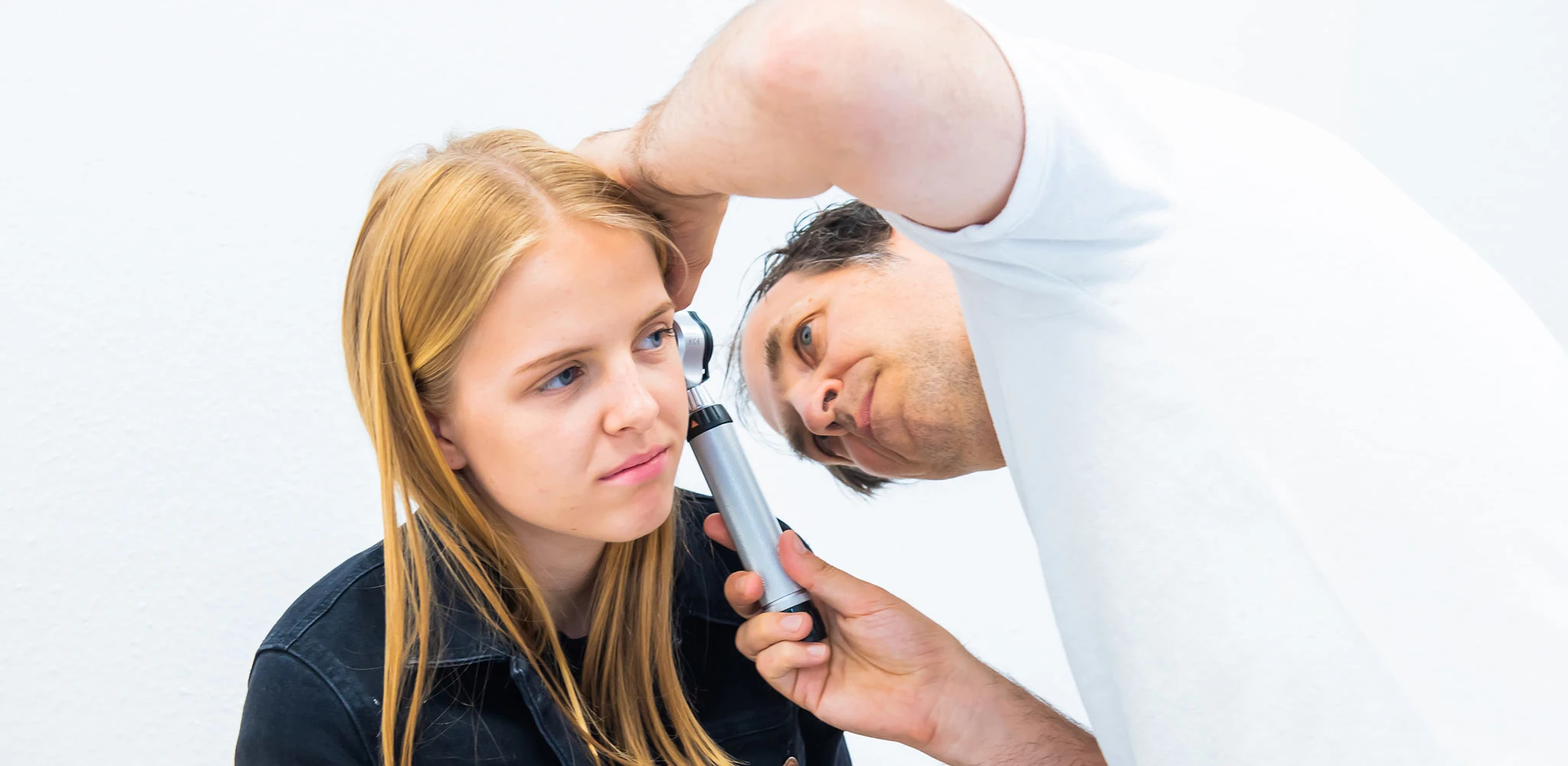When the stork bites
Not a disease, but an interesting phenomenon that occurs in babies and sometimes causes irritation in young parents: the so-called stork bite.
Around half of all babies and newborns have a reddened area of skin - mainly on the face, eyes, nose or forehead, but most frequently on the neck. The area on the back of the neck is called a stork bite.
This term has evolved historically. In the past, people didn't really talk to children about sexual issues and therefore told them that the stork had grabbed the baby by the scruff of the neck and delivered it to the house. This meant that it was not really necessary to discuss how the child was born. Hence the name stork bite.
The correct medical term is port-wine stain or naevus flammeus. The classic port-wine stains on the neck, forehead or nose actually disappear in the first three to six months. Sometimes children also have larger marks on the cheeks, which usually disappear by the end of the second year of life.
From a medical point of view, these marks are extensions of small, capillary skin vessels, simply a natural malformation that disappears of its own accord.
There is also the very rare form in which entire areas of the face or larger areas of the breast are affected. In this case, it makes sense to discuss this with your paediatrician, as you should then check whether there are any other malformations in the body.
It is also important to consider in the long term whether an aesthetic therapy approach should be pursued when the children are older. This can then be done by our dermatological colleagues. There is no causal therapy and in the vast majority of cases there is no need for one. Because, as I said, stork bites are an exciting phenomenon that is medically unproblematic.
Further interesting tips
Certificates I
A few thoughts on the not-so-easy subject of school reports. I don't normally ask parents to read my texts or watch videos. But please do this time.
Avoid disease transmission!
I received an interesting question from a mum. Namely: How can you, or to what extent do you have to avoid possible disease transmission to children in everyday life? Note in advance: We are making this generalised here, i.e. independent of coronavirus. Because it's clear that sensitivity to the transmission of infection is extremely high at the moment. But I think the question is generally important and will therefore be answered accordingly.
Urinary tract infection
The child has to wee very frequently, is in pain or wets in an atypical way. Classic symptoms of a urinary tract infection. If you notice these in your child, you should pay particular attention to one thing.
